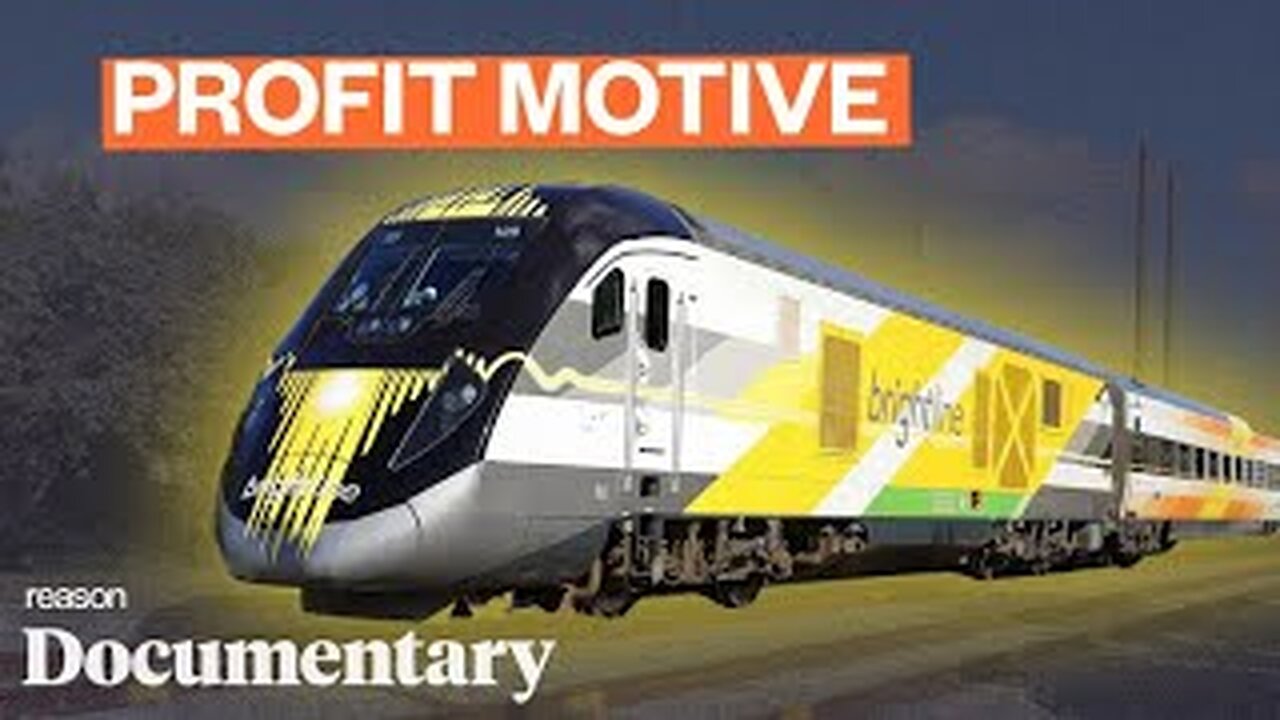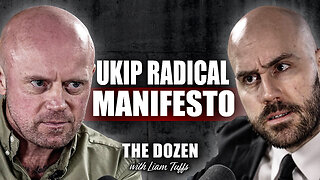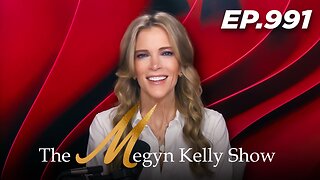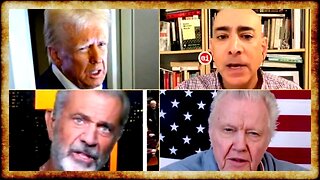Premium Only Content

How Florida beat California to high speed rail | ReasonTV
Meus Outros Canais:
Linktree: https://linktr.ee/gab_figueiro
Rumble: https://rumble.com/user/gabfigueiro
Youtube: https://www.youtube.com/channel/UCx2Q5RBUONYO5A7vYxVOZ2w
COS.TV: https://cos.tv/channel/33700942577575936
MGTOWTV: https://www.mgtow.tv/@gabfigueiro
Bitchute: https://www.bitchute.com/channel/d254x5zSWGQo/
Odysee: https://odysee.com/@Libertar_09:7
Chainflix: https://www.chainflix.net/channel/29870/
Gan Jing World: https://www.ganjingworld.com/s/3gQe1ogXA6
Fruitlab: https://fruitlab.com/gabfigueiro
StoryFire: https://storyfire.com/user/axn4fb1lmv0sttb
Dailymotion: https://dailymotion.com/gab_figueiro
gleev: https://gleev.xyz/channel/62487
Vimeo: https://vimeo.com/gabfigueiro
Título Original: How Florida beat California to high speed rail
Publicado em YT, 20 de Setembro de 2023
Créditos: ReasonTV
Publicação Original : https://www.youtube.com/watch?v=t44mlIuh8wo
Descrição Original do Autor:
38.623 visualizações 20 de set. de 2023
Brightline is betting that it can run a commercially viable passenger rail service without massive federal subsidies.
Full text and links: https://reason.com/video/2023/09/20/h...
---
In 19th century America, trains symbolized modernity. Passenger rail connected the east and west coasts and helped settle the frontier. By 1916, rail accounted for 98 percent of intercity travel.
As it became easier to drive or fly, passenger rail use plummeted. In 1971, the government created Amtrak, which survives on federal subsidies. And most recently the Biden administration gave Amtrak $66 billion in federal subsidies as part of the federal infrastructure bill.
But in Florida, Brightline is showing that it's still possible to run a viable, privately operated passenger rail line under certain conditions. The company is starting service from Miami to Orlando on September 22.
Not only is Brightline the first privately funded intercity rail line in the U.S., but it's also the fastest train in the country outside of the northeast corridor. Topping out at 125 mph in Florida, it will travel from Miami to Orlando in about three hours. For comparison, the Amtrak in the area takes about six and a half hours to complete that same trip.
Mike Reininger, CEO of Brightline, told Reason that passenger rail makes commercial sense under specific conditions, such as the case in Florida, where it connects two populous, tourist-friendly cities that are about 250 miles apart. At that distance, Reininger says, "It is too far to drive and too short to fly. You can approximate the time of flying significantly, improve the time of driving, and you can offer it at a price point that makes it an economic proposition."
There has been one other ambitious effort to build high-speed rail in the U.S.—in California. But that project turned into something so "foolish" that it's "almost a crime," according to Quentin L. Kopp, the former state senator who was crucial in rallying support for a $10 billion bond measure to build high-speed rail in California. He became a fierce opponent of the project when it ran out of money and the agency in charge, he says, broke its promises to voters.
The 520-mile railway between San Francisco and Los Angeles was supposed to be completed by 2020. But after fifteen years of construction, they've only laid track for a 170-mile stretch in the Central Valley. The project, which has received more than $20 billion in state and federal subsidies, is now projected to cost over $128 billion.
Following on its success in Florida, Brightline is also starting to develop a high-speed rail line out west—connecting Las Vegas to Los Angeles. The 218-mile line will have just a handful of stops and plans to reach speeds over 186 mph. But the company is pursuing about $3 billion worth in federal subsidies to complete the project, or about a third of the total estimated cost. Though not even close to the amount of money California needs to finish its project, Robert Poole, the director of transportation policy at Reason Foundation, is "skeptical" once federal money gets involved at all in large infrastructure projects.
"It becomes far less of a business venture. And much more of this attitude that we can do grand things because we don't have to worry about what it costs," says Poole.
But Brightline's Florida project remains a true test of whether there are narrow cases in which American travelers value passenger rail enough to pay for it with their own money.
Photo Credits: akg-images / Paul Almasy/Newscom; Chris Kleponis - CNP/Newscom; Ron Sachs - CNP/Newscom; DPST/Newscom; Everett Collection/Newscom; Everett Collection/Newscom; Everett Collection/Newscom; National Motor Museum / Heritage Images/Newscom; Gary Reyes/TNS/Newscom; Gary Reyes/TNS/Newscom; Gary Reyes/TNS/Newscom; Underwood Archives/Universal Images Group/Newscom; Underwood Archives/Universal Images Group/Newscom; Underwood Archives/UIG / Universal Images Group/Newscom; Darryl Heikes/UPI/Newscom
-
 1:56:04
1:56:04
TheDozenPodcast
12 hours agoMass deportations, Islamists, Saving the UK: Nick Tenconi
16 -
 35:24
35:24
Survive History
16 hours agoCould You Survive in a Cavalry Regiment During the English Civil War?
84 -
 28:15
28:15
Degenerate Plays
11 hours agoTwo Birds' Secret Meeting - Gotham Knights : Part 26
60 -
 12:29
12:29
Mr. Build It
5 days agoWish I Knew This Before I Started Building It
31.3K15 -
 2:03:57
2:03:57
Megyn Kelly
2 days agoNew Trump Derangement Syndrome, and How CNN Smeared a Navy Veteran, w/ Piers Morgan & Zachary Young
127K171 -
 10:05
10:05
DIY Wife
3 years agoHow We Flip Old Furniture For Profit!
65.3K58 -
 2:14:54
2:14:54
TheSaltyCracker
9 hours agoTrump Goes Gangster ReeEEeE Stream 01-26-25
139K296 -
 4:42:13
4:42:13
Due Dissidence
18 hours agoTrump Calls To "CLEAN OUT" Gaza, Swiss ARREST Pro-Palestine Journalist, MAGA's Hollywood Makeover?
63.1K85 -
 2:02:20
2:02:20
Nerdrotic
10 hours ago $19.44 earnedDECLASSIFIED: JFK, MLK UFO Immaculate Constellation Doc | Forbidden Frontier #089
84.8K17 -
 3:00:14
3:00:14
vivafrei
18 hours agoEp. 248: "Bitcoin Jesus" Begs Trump! Rekieta Gets Plea Deal! Pardons, Deportations, Bird Flu & MORE!
197K216